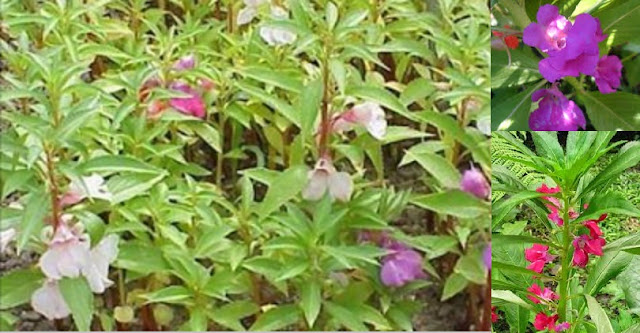Kamantigue or also known as garden balsam is a native to South and Southeast Asia and mostly considered as a Philippine medicinal herb. This plant offers numerous health benefits and not only that this is completely edible! Leaves and seeds are edible: leaves and young shoots are cooked; the seeds raw or cooked.
Folkloric
• In the Philippines, pounded leaves used as poultice to dissolve whitlow.
• In Malaya, leaves used for poulticing broken and torn nails.
• In China, powdered seeds are prescribed for difficult labor.
• Flowers used for snake bites, lumbago, and intercostal neuralgia.
• For contusion, painful inflammation, joint pains, carbuncles, dysmenorrhea, lumbago, and snake bites: use dried flowers, 3 to 6 gms or seed preparation, 3 to 7 gms or the entire plant, 9 to 15 gms, boil to decoction and drink.
• Seed is expectorant; used for cancer treatments.
• For external use on any bruise or painful area; crush fresh plant and poultice the affected parts of the body.
• Leaf juice used for treatment of warts.
• Root and leaves used for various foreign bodies – coins or other metals inadvertently swallowed, as well as thorns or fish splinters.
• In the U.S. the most common use of jewel weed is to treat poison ivy rashes.
Others
• Dye: Dyes is obtained from flowers and leaves. In parts of Asia, flowers are used as a substitute for Henna for dyeing finger-nails.
Folkloric
• In the Philippines, pounded leaves used as poultice to dissolve whitlow.
• In Malaya, leaves used for poulticing broken and torn nails.
• In China, powdered seeds are prescribed for difficult labor.
• Flowers used for snake bites, lumbago, and intercostal neuralgia.
• For contusion, painful inflammation, joint pains, carbuncles, dysmenorrhea, lumbago, and snake bites: use dried flowers, 3 to 6 gms or seed preparation, 3 to 7 gms or the entire plant, 9 to 15 gms, boil to decoction and drink.
• Seed is expectorant; used for cancer treatments.
• For external use on any bruise or painful area; crush fresh plant and poultice the affected parts of the body.
• Leaf juice used for treatment of warts.
• Root and leaves used for various foreign bodies – coins or other metals inadvertently swallowed, as well as thorns or fish splinters.
• In the U.S. the most common use of jewel weed is to treat poison ivy rashes.
Others
• Dye: Dyes is obtained from flowers and leaves. In parts of Asia, flowers are used as a substitute for Henna for dyeing finger-nails.
Loading...
Visit and follow our website: Philippines News Blog
© Philippines News Blog












No comments:
Post a Comment